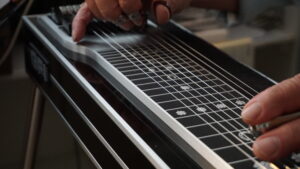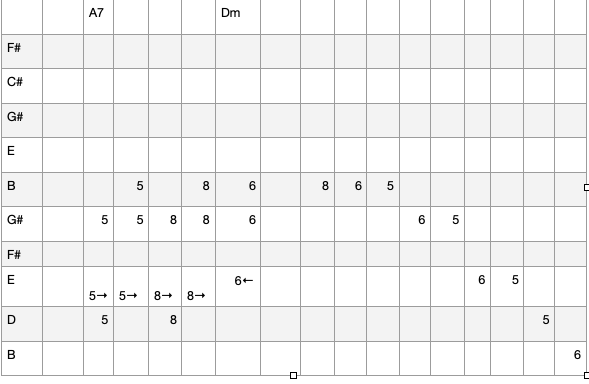
Since every chord progression, whether Major or Minor, uses a V7 dominant chord to return to it’s root, or home key, it’s good to have as many forms of this chord as possible at your disposal.
One of the interesting features of the Dominant chord is the fact that it can be moved up the neck or down the neck 3 frets (a minor third interval) and keeps it’s dominant sound through the inversions. The tension in the chord asks for resolution and takes the listeners ear back to the root, or home, chord.
This particular dominant chord form, the Dominant 7 flat nine chord, (V7b9) which I’m calling the Magic Dominant, can be one of the most useful tools in your improv tool box.
The first thing to do is locate the basic chord form on the fretboard.
In the example we are using an A7b9. The home base for the form is at the no pedals position for an A chord at the 5th fret. The dominant 7 note is on the 9th string and the root note A is raised with a knee lever to create the flat 9 note.
Since we are using three notes for our chord forms we can cut one note out and still retain the sound of the chord and since it’s a dominant chord it will retain it’s sound when it’s moved up or down in minor thirds. The two forms next to each other can also function to cover a minor 7b5 chord and a 7b5 chord in a minor progression. Move this combination up and down the neck in minor thirds and see how it sounds.
The home chord that the V7 is headed for is some form of a D chord, in this example a D minor.
Now that you have this concept to work with you can experiment with it in your chord progressions and find ways to add to your sound anywhere you have a 7th chord.
The arrows in the tablature refer to raising or lowering the note with whatever lever or pedal works for that function and the single note line is written out without pedals so you can play the notes however your tuning allows.